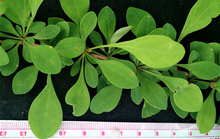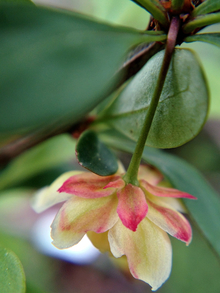Quick facts
Certain varieties of Japanese barberry are Restricted Noxious Weeds in Minnesota. See the department of agriculture's page for specific information.
- Japanese barberry prefers well-drained soils in woodlands.
- Once established, its prolific spreading shades out native plants.
- Fruit and seeds dispersed by birds aid in its spread.
- Intentional plantings in ornamental landscapes also spread it.
- Japanese barberry has been shown to increase the populations of ticks and may contribute to an increase in tick borne disease.
- Only certain cultivars are listed as restricted noxious weeds.
Japanese barberry should be reported. The Minnesota Department of Natural Resources provides detailed recommendations for reporting invasive species.
How to identify Japanese barberry
- Small, compact, spiny shrub, 3–6 feet tall with slightly curving branches.
Stem
- 1/2-inch-long spines occur at nodes where leaves attach.
Branches
- Curving branches with numerous sharp spines.
- Branches can root when in contact with the soil.
Leaves
- Small, rounded and untoothed leaves are arranged in clusters above single spines; appear early in the spring.
- Leaves often turn shades of orange, red and purplish red in fall.
Flowers
- Yellow, single or in clusters of 2 to 4 blossoms.
- Blooms in May.
Fruit and seeds
- Small, bright red, egg-shaped berries in clusters or single; mature in August and stay on the shrub through winter.
Roots
- Spreads vegetatively through horizontal lower branches that root freely.
Reviewed in 2019




